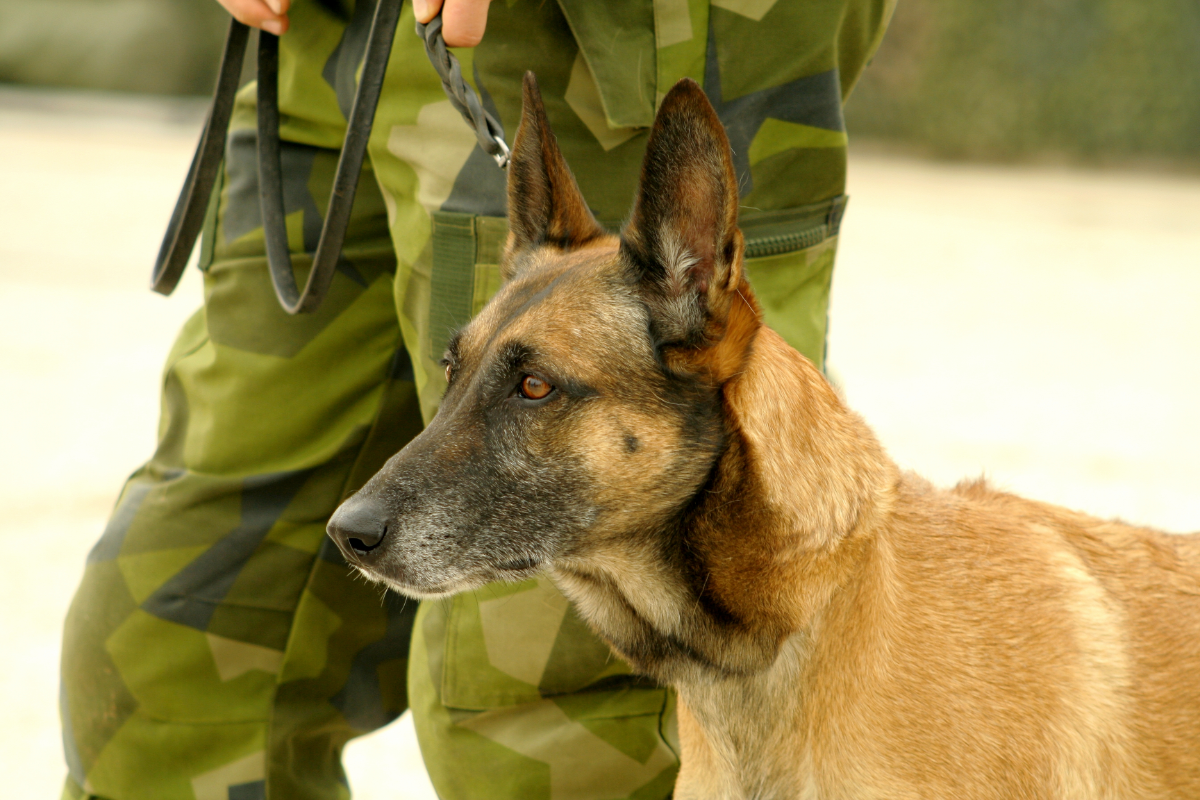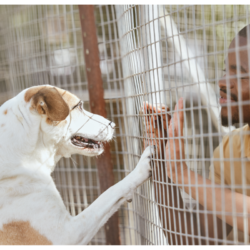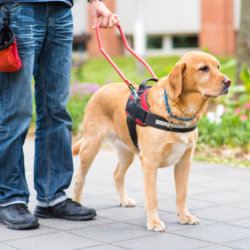Post-traumatic stress disorder(PTSD) is a well-documented pathology in humans, but its study in the veterinary field, particularly in dogs, is still emerging. At a time when dogs occupy a prominent place in many societies, not only as pets but also as working partners in a variety of contexts (army, police, assistance), the need to understand and treat the psychological disorders to which they may be subject is becoming increasingly relevant. Exposure to traumatic events, situations of intense stress or dysfunctional environments can cause dogs to show signs of psychological suffering similar to the symptoms observed in human PTSD. However, the recognition, diagnosis and management of these symptoms represent major challenges due to the behavioural and biological particularities of the canine species.
What is PTSD?
Post-traumatic stress disorder(PTSD) in dogs manifests itself, as in humans, after a traumatic experience. Veterinary ethologist Nancy A. Dreschel (2010) shed light on this syndrome by studying fear and stress in dogs, demonstrating their impact on the animal’s overall health. Canine PTSD often occurs in working dogs, such as military or police dogs, exposed to stressful and potentially dangerous events. These dogs show clinical symptoms such as an exacerbated reaction to noises, sudden behavioural changes,aggression or avoidance. They may also suffer from sleep disturbances and signs similar to those observed in human patients with PTSD.
Research on canine PTSD, although limited, reveals behaviours related to significant trauma. Yamamoto (2003) described a ” syndrome similar to PTSD ” in dogs that had survived an earthquake in Japan, observing trembling, howling and severe anorexia. Other studies, particularly following the Fukushima accident, show that these traumatised dogs have high levels of urinary cortisol, indicating prolonged stress.
According to Overall (2013), PTSD in dogs is defined as an intense behavioural response to an unbearable stimulus or unavoidable situation, leading to excessive activation of the nervous system. This response results in a flight or anxiety reaction, seriously disrupting the dog’s quality of life.
PTSD can be acute, with symptoms appearing shortly after the trauma and disappearing within a few months, chronic when symptoms persist for more than three months, or delayed onset, appearing more than six months after the event.
What are the symptoms in dogs?
Post-traumatic stress disorder(PTSD) in dogs is characterised by a variety of physical and behavioural symptoms, often associated with a traumatic experience. Somatic signs include excessive salivation, trembling, weight loss, episodes of chronic or intermittent diarrhoea and a dull coat. These physical manifestations are generally accompanied by behavioural signs that reflect the animal’s state of distress.
Behaviourally, a dog with PTSD may adopt a fixed posture, sometimes accompanied by trembling, or show hyperstimulation, unable to calm down. Licking of the lips,hypervigilance and an inability to make eye contact are common, reflecting constant fear. Some dogs refuse to eat or perform activities previously enjoyed, which can affect their ability to work as service dogs.
Other signs include a tendency to hide, social withdrawal and a loss of zest for life. Distressing behaviour, such as destructiveness, self-mutilation, or excessive vocalisations, may also occur. Repeated exposure to stimuli reminiscent of the trauma may aggravate these symptoms, generating a persistent avoidance or fear response. Assessing these symptoms remains complex, as it relies on observing behaviour in the absence of a verbal report. These signs reflect the emotional suffering of the dog, whose quality of life is severely altered.
What are the causes and risk factors?
Post-traumatic stress disorder(PTSD) in dogs results from prolonged exposure to intense stress or severe trauma. Several risk factors increase the vulnerability of certain dogs to PTSD. Abused dogs, for example, are often subjected to injuries, physical punishment or harsh living conditions that result in profound emotional distress. These experiences of mistreatment may include physical abuse, confinement or abandonment, placing these animals in situations of extreme psychological danger.
Dogs that have experienced major trauma are also at risk, whether from natural disasters (such as earthquakes or fires), serious accidents, or aggressive interactions with other animals. In particular, military dogs and those used in high-risk situations (mine clearance, security interventions) undergo unique traumatic experiences. Exposed to fighting, explosions or gunfire, these dogs face events that they can neither control nor anticipate, leading to the development of PTSD.
Researchers also suspect that some dogs have a genetic predisposition to PTSD, which could explain why some are more sensitive to stress than others. This genetic sensitivity, which is particularly important in the case of working dogs, may influence the selection of breeding stock to limit the risk of transmitting this vulnerability.
So the combination of a stressful environment, a genetic predisposition and traumatic experiences may make some dogs more likely to develop post-traumatic syndrome, with lasting effects on their quality of life and emotional well-being.
What treatments are available for post-traumatic stress disorder?
Diagnosis of post-traumatic stress disorder(PTSD) in dogs begins with a careful assessment of the dog’s symptoms and history of trauma. The vet must first rule out any physical causes through a thorough examination and blood tests, to detect any infections or chronic pain that may be inducing similar stress. Once physical causes have been ruled out, the vet examines recent traumatic events and the context of the animal’s life to identify possible PTSD triggers.
Treatment options include drug therapies, behavioural therapies and natural approaches such as phytotherapy. Antianxiety medications (such as alprazolam or clorazepate) can calm immediate panic attacks, while SSRI antidepressants such as fluoxetine are effective for long-term treatment, reducing excessive fear behaviour. However, these drugs require rigorous veterinary monitoring to avoid side effects.
Behavioural therapies also play a crucial role, particularly counter-conditioning and desensitisation. These techniques gradually expose the dog to stimuli associated with the trauma in a safe way, in order to modify its emotional response. Guided relaxation and positive reinforcement exercises also help the dog to regain a sense of control in its daily life.
Finally, phytotherapy offers natural solutions for reducing anxiety. Plants such as camomile, valerian and passionflower work effectively to calm dogs without causing addiction. Available in the form of sprays, treats or oils, these natural remedies complement behavioural therapies and provide lasting relief.





